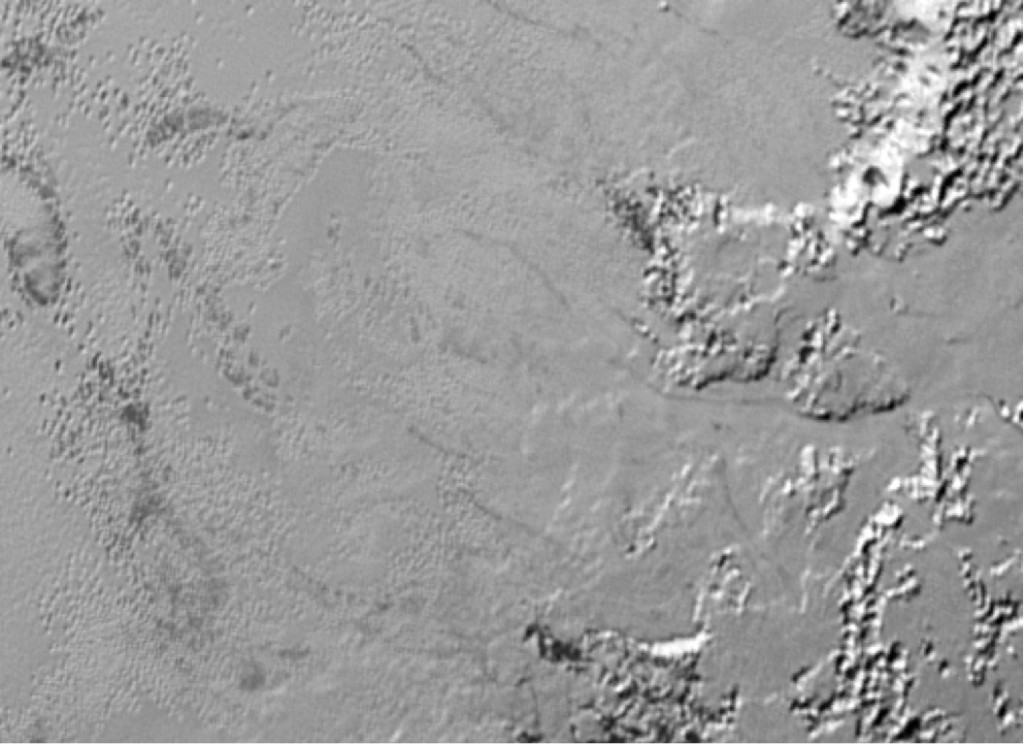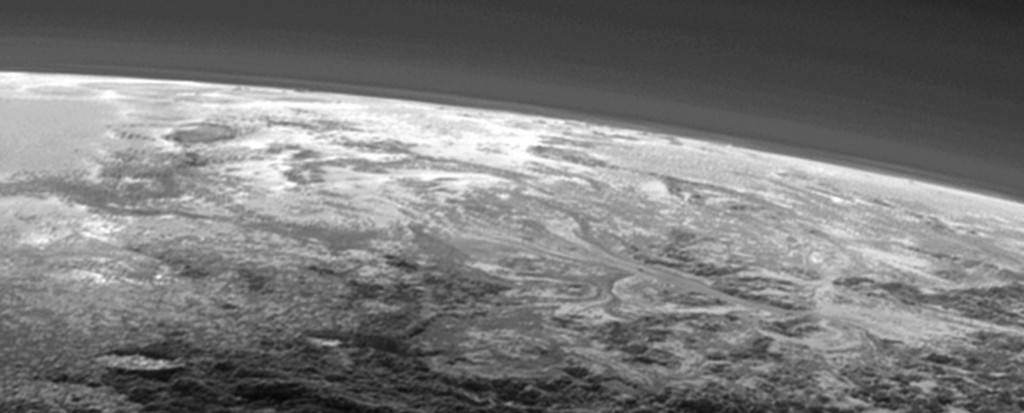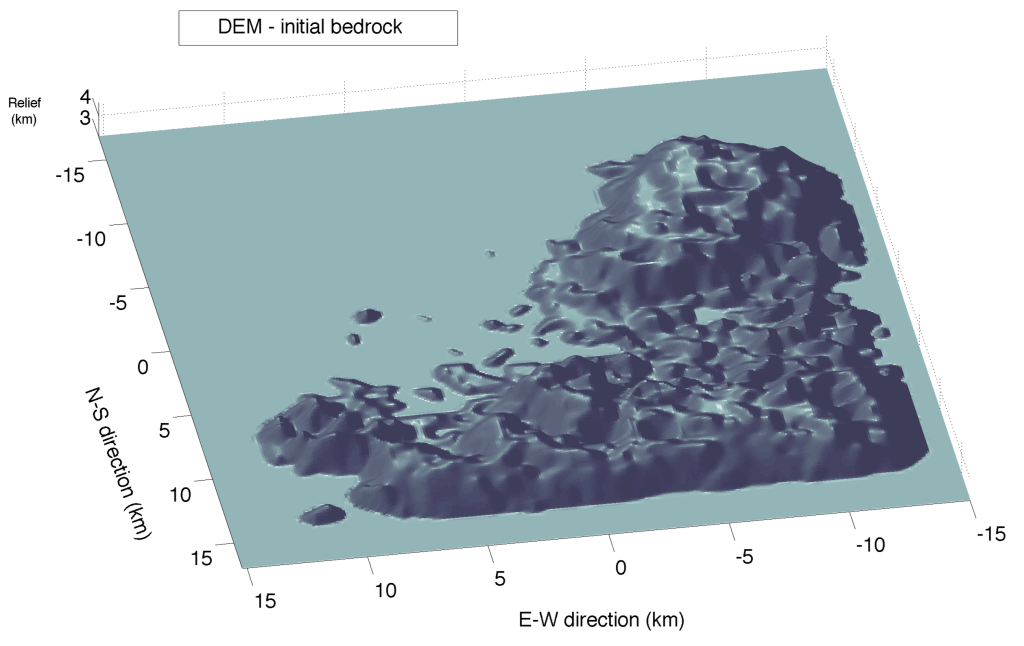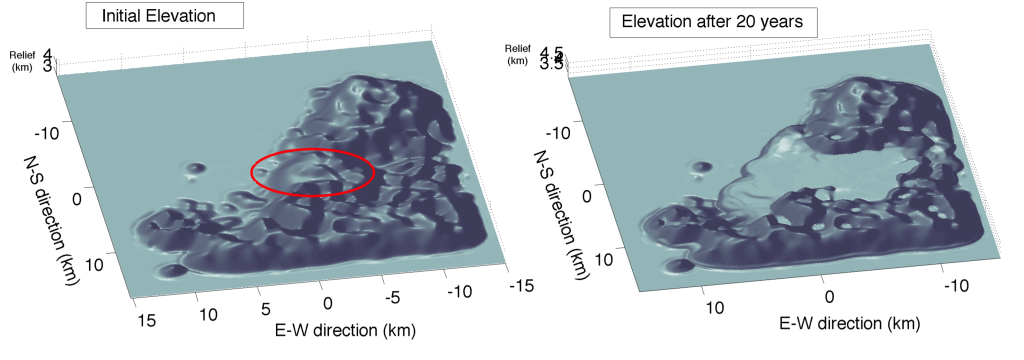“Since its discovery, Pluto has proven consistently troublesome to the theorist.”
– Sir Patrick Moore, The Observer’s Book of Astronomy (1971)
Written 45 years ago, these words are more appropriate today than Moore could have ever imagined. Greetings, I’m Dr. Orkan Umurhan, a scientist on New Horizons’ Geology and Geophysics Investigation (GGI) Team.
Pluto’s surface geology alone – from the bladed terrain of Tartarus Dorsa to the mysterious dark mound of Morgoth Macula (just to mention a few informally named features with perplexing geologies) – continues to stump all of us on the New Horizons Geology and Geophysics Investigation (GGI) team.
Over the last month, I’ve been examining numerous theoretical and modeling questions to attempt to explain the processes at work within Pluto’s frozen plains, known as Sputnik Planum (SP). In a separate, yet parallel vein, I’m also studying the nature of glacial flows onto SP from the highlands bordering its eastern shoreline. In this blog, I will talk about the glacial flow problem.
First, let’s look at some pictures of glacial flow on Pluto’s frozen plains.


These are two views of the same part of the eastern side of SP—one is a nearly overhead snapshot, while the other one is a very low-incidence angle image, dramatically displaying the relief of the landscape. In the overhead image you can see dark streaks emanating from the right leading onto the open plane tracing a lobate pattern – kind of like hot wax moving down an inclined plane. The dark materials are reminiscent of glacial moraines seen on Earth, but because this is Pluto, we have no idea what this dark material is, and whether or not the patterns we see are indeed moraines in the traditional terrestrial sense.
However, we do know what our colleagues on the New Horizons Composition team tell us: they have pretty solidly (ahem!) determined that the surface material on and in the near vicinity of SP is mainly made up of nitrogen, carbon monoxide, and methane ices, although their relative proportions are not yet determined.
In my initial considerations, I assume the flowing material is made of mostly nitrogen with some carbon monoxide, both of which have similar molecular bond structures. Based on what little lab work has been done on their properties under cold temperatures characteristic of Pluto’s surface (-390 degrees Fahrenheit or 38 Kelvin), these volatiles ought to flow more slowly than silly putty, but much faster than glacial water ice on Earth.
The response timescales appropriate for these volatiles with the scale and relief of the highlands seen around Sputnik Planum leads us to the geophysical insight that these high relief structures (icy mountains) are probably not made up of any of these pure volatile ices, because they would have flattened out a long time ago. Instead, we speculate that the highlands are more likely made of a very strong structurally rigid water ice “bedrock” covered by a very thin coating of nitrogen and/or carbon monoxide ice.
This is where I come in: I fold all of this laboratory information about the volatile ices, as well as various geophysical insights into a numerical simulation platform I built a year ago that models glacial flow. This tool is used to examine various scientific hypotheses from me and other members of the geology team.

For example, one task is to examine possible scenarios explaining how the observed lobate pattern (think hot wax) comes about, and whether or not a nitrogen glacial model can explain what we see. To accomplish this, I start with a Digital Elevation Model (DEM) seen above, using stereo imaging of Pluto’s surface with vertical relief on the order of .6 miles (1 kilometer). I use this model as my bedrock surface—then I add nitrogen ice and study the response.

To show you an example of the kind of response the model can exhibit, consider the figure above, where I take this surface bedrock and add glacial nitrogen ice, indicated by the red ellipse on the left figure. To this model I also add a feature representing the uniform accumulation of deposited nitrogen ice, in the amount of about one yard (one meter) per year. The outflow state is shown in the right panel. In this artificial example, I have put in nearly 400 yards (400 meters) of ice inside the circled red region. The final flow state – including nice frontal lobes – gets there in about 20 Earth years. This is fast! You can also see accumulation of nitrogen ice inside of craters; this is because the steady deposition of ice also runs down steep-sided slopes and collects inside.
In understanding complex Pluto, progress is slow, but we are making progress. Stick around for the next installment of my blog, in about a month, when I will have more cool results!

